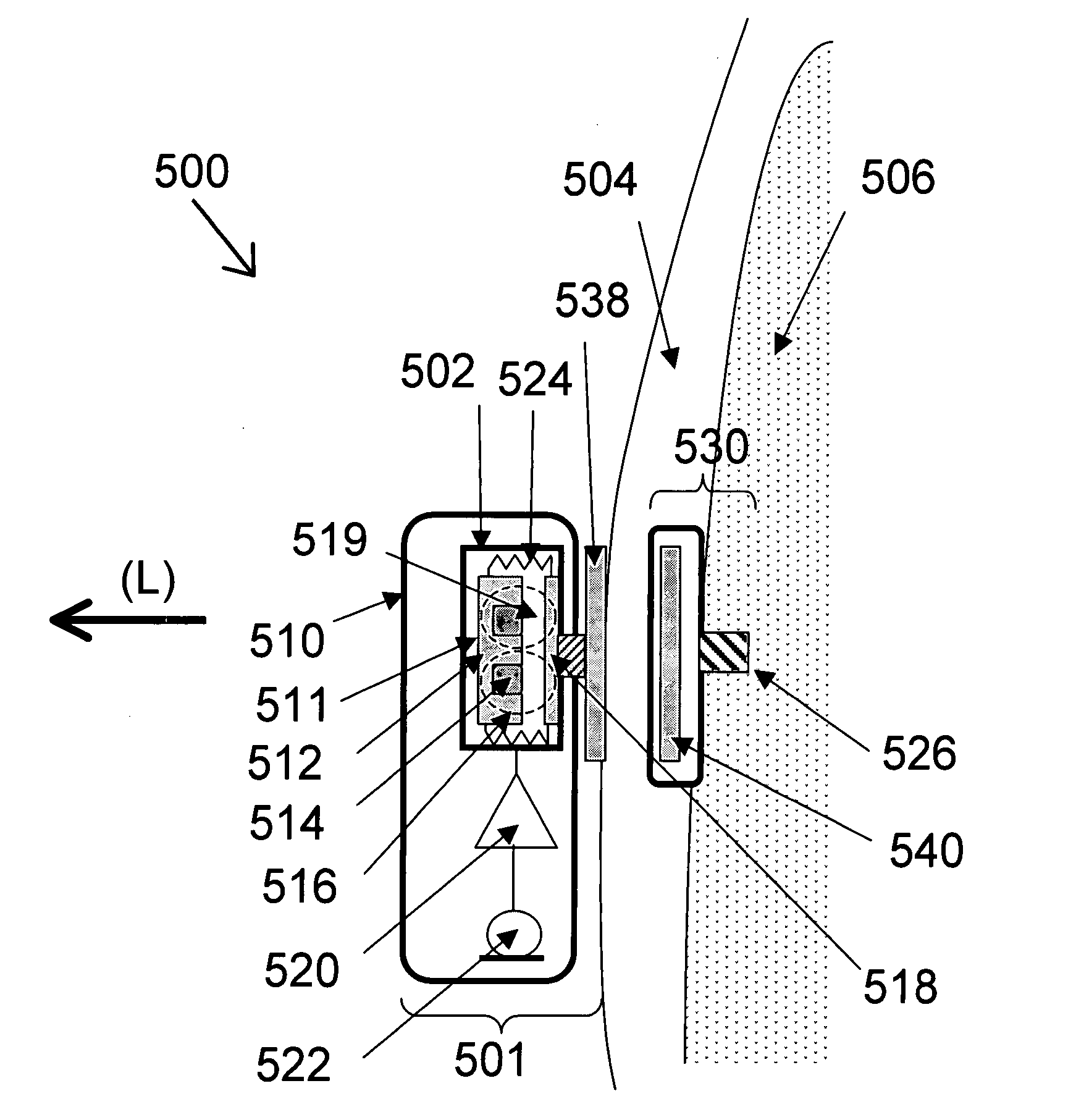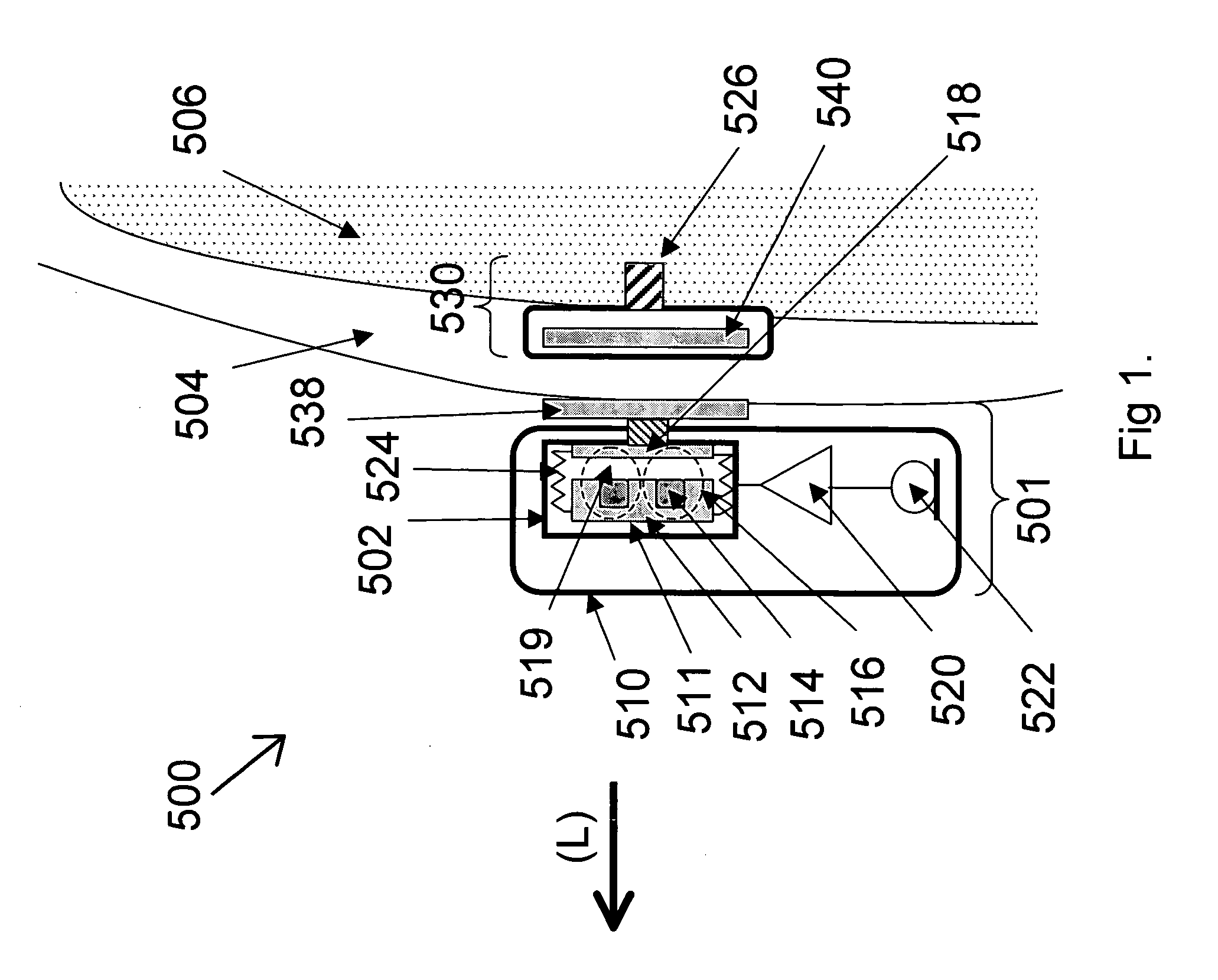Hearing aid system
a technology of hearing aids and auxiliary devices, applied in the field of hearing aid systems, can solve the problems of skin infections, patients often complain about poor esthetics, significant drawbacks for patients, etc., and achieve the effects of reducing the force of magnetic attachment, and facilitating chang
- Summary
- Abstract
- Description
- Claims
- Application Information
AI Technical Summary
Benefits of technology
Problems solved by technology
Method used
Image
Examples
Embodiment Construction
[0030]FIG. 1 is a cross-sectional side-view of the hearing aid system 500 of the present invention. An external hearing aid unit 501 has a vibrator 502 disposed therein. The vibrator 502 may be an assembled integrated unit so that all vibrator components may be disposed inside the external hearing aid unit 501. Preferably, the vibrator 502 has a vibrator plate 518 that is connected to a skin contact pressure plate 538 via a connector segment. The skin contact pressure plate 538 is magnetic so that it is magnetically attracted to a magnetic portion 540 of an implanted unit 530 that is anchored in the skull bone 506 by a fixation portion 526. This magnetic interaction presses the skin contact pressure plate 538 against the skin 504. The vibrations from the integrated vibrator 502 are transmitted to the skin contact pressure plate 538 and then through the skin 504 of the skull bone 506 to the implanted unit 530. It is also possible to make the skin contact pressure plate 538 of a suita...
PUM
 Login to View More
Login to View More Abstract
Description
Claims
Application Information
 Login to View More
Login to View More - R&D
- Intellectual Property
- Life Sciences
- Materials
- Tech Scout
- Unparalleled Data Quality
- Higher Quality Content
- 60% Fewer Hallucinations
Browse by: Latest US Patents, China's latest patents, Technical Efficacy Thesaurus, Application Domain, Technology Topic, Popular Technical Reports.
© 2025 PatSnap. All rights reserved.Legal|Privacy policy|Modern Slavery Act Transparency Statement|Sitemap|About US| Contact US: help@patsnap.com



